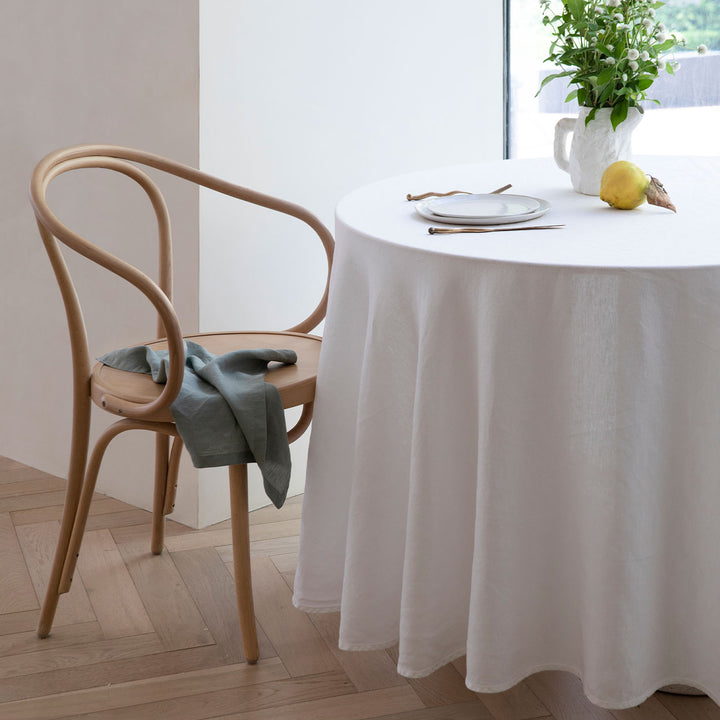Bed Linen Textile Innovations: Checking Out Modern Trends and Creative Applications in Style and Fabric Sector
From lasting production techniques to cutting-edge weaving modern technologies, the development of bed linen is improving the landscape of the textile industry. As we dig into the worlds of imaginative layout applications and the introduction of linen blends and crossbreed fabrics, a brand-new phase unfolds in which linen's duty in future textile developments takes center phase.
Sustainable Practices in Linen Manufacturing
Sustainable practices in bed linen production have actually ended up being increasingly crucial in the textile industry's initiatives to minimize environmental effect and promote moral sourcing methods. Linen, a natural fiber originated from the flax plant, uses an array of benefits such as biodegradability, breathability, and toughness. Nonetheless, standard methods of bed linen manufacturing can include significant water usage, chemical use, and energy-intensive procedures.
To attend to these challenges, lots of textile makers are adopting lasting practices throughout the linen manufacturing procedure. This includes sourcing flax from organic ranches that avoid unsafe pesticides and chemicals, applying water-efficient retting strategies to remove fibers from the flax stalks, and utilizing eco-friendly dyes and surfaces. In addition, some companies are buying renewable resource sources to power their production centers and decreasing waste with recycling and upcycling campaigns.
Technological Developments in Bed Linen Weaving
With the expanding focus on lasting practices in linen manufacturing, the fabric sector is now seeing a rise in technical innovations especially intended at transforming the art of bed linen weaving. These advancements are improving the means bed linen textiles are produced, offering enhanced efficiency, high quality, and imagination in weaving methods.
Among the crucial technical innovations in bed linen weaving is the assimilation of digital looms. These sophisticated looms are furnished with software program that enables detailed and intricate styles to be woven with precision. By digitizing the weaving process, makers can accomplish better uniformity and accuracy in their bed linen materials.
Furthermore, developments in yarn spinning innovation have allowed the manufacturing of finer and even more long lasting bed linen yarns - table cloths. This causes softer and smoother linen materials that keep their high quality also after multiple usages and cleans
Additionally, the growth of green dyeing procedures and finishes for bed linen materials is acquiring traction. These lasting practices not only minimize the ecological impact however additionally satisfy the increasing consumer need for fairly generated fabrics.
Creative Design Applications for Bed Linen
Cutting-edge artistic approaches are progressively shaping the imaginative layout applications for linen in the fabric sector. Linen's natural visual allure and capacity to blend with other fabrics make it a favorite option for producing special garments and devices that cater to the ecologically conscious customer.
Furthermore, designers are experimenting with bed linen in home design, utilizing its sturdy and breathable nature to craft stylish furnishings such as curtains, bed linen, and upholstery. The structure and drape of linen bring a sense of sophistication and comfort to interior spaces, adding a touch of sophistication to contemporary homes.

Bed Linen Blends and Crossbreed Fabrics

Hybrid materials, on the various other hand, take more the idea of mixing a step even more by integrating additional aspects such as metallic threads, recycled products, or conductive fibers. These cutting-edge fabrics not just increase the layout possibilities yet also introduce useful elements like conductivity, antimicrobial homes, or boosted sturdiness. Hybrid textiles are significantly being used in various sectors, consisting of fashion, interior decoration, and technological fabrics, where the demand for multifunctional products is on the surge.
Bed linen's Role in Future Textile Innovations

In the realm of future fabric developments, linen is expected to be a principal in the growth of innovative functional textiles. Developers and researchers are checking out means to enhance linen's integral qualities through technological innovations, such as including clever fabrics, nanotechnology, and efficiency finishes. These advancements intend to raise linen's performance features, making it suitable for a wider variety of applications, from activewear to protective garments.
In addition, the combination of bed linen with various other all-natural or artificial fibers opens endless possibilities for creating novel textiles with distinct properties and functionalities. By leveraging bed linen's features and discovering ingenious blends, the textile sector is positioned to present exciting growths that deal with evolving customer requirements and sustainability requirements.
Final Thought
Finally, the exploration of lasting techniques, technological advancements, innovative layout applications, bed linen blends, and its role in future textile technologies highlight the constant evolution of linen fabric in the contemporary layout and fabric market. With an emphasis on technology and creativity, the convenience and green nature of linen make it a useful material for makers and developers alike, leading the way for further advancements and innovations in the field of textiles.
As we delve right into the worlds of imaginative layout applications and the development of bed linen blends and crossbreed fabrics, a brand-new phase unfolds in which bed linen's role in future fabric technologies takes facility stage.
Exploring the blend of bed linen with various other materials has actually led to the emergence of ingenious blends and hybrid textiles in the contemporary textile industry. Bed linen blends supply a special combination of the qualities of linen with those find out here of other fibers, resulting in textiles that have improved buildings such as raised durability, boosted draping, and minimized wrinkling.The advancement of bed linen blends and hybrid textiles has actually set the stage for Bed linen to play a crucial function in driving future textile technologies.In the world of future textile advancements, bed linen is anticipated to be a key player in the development of sophisticated practical materials.